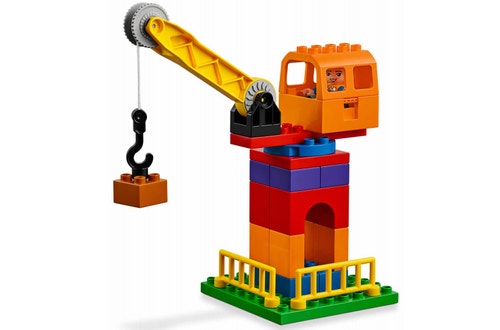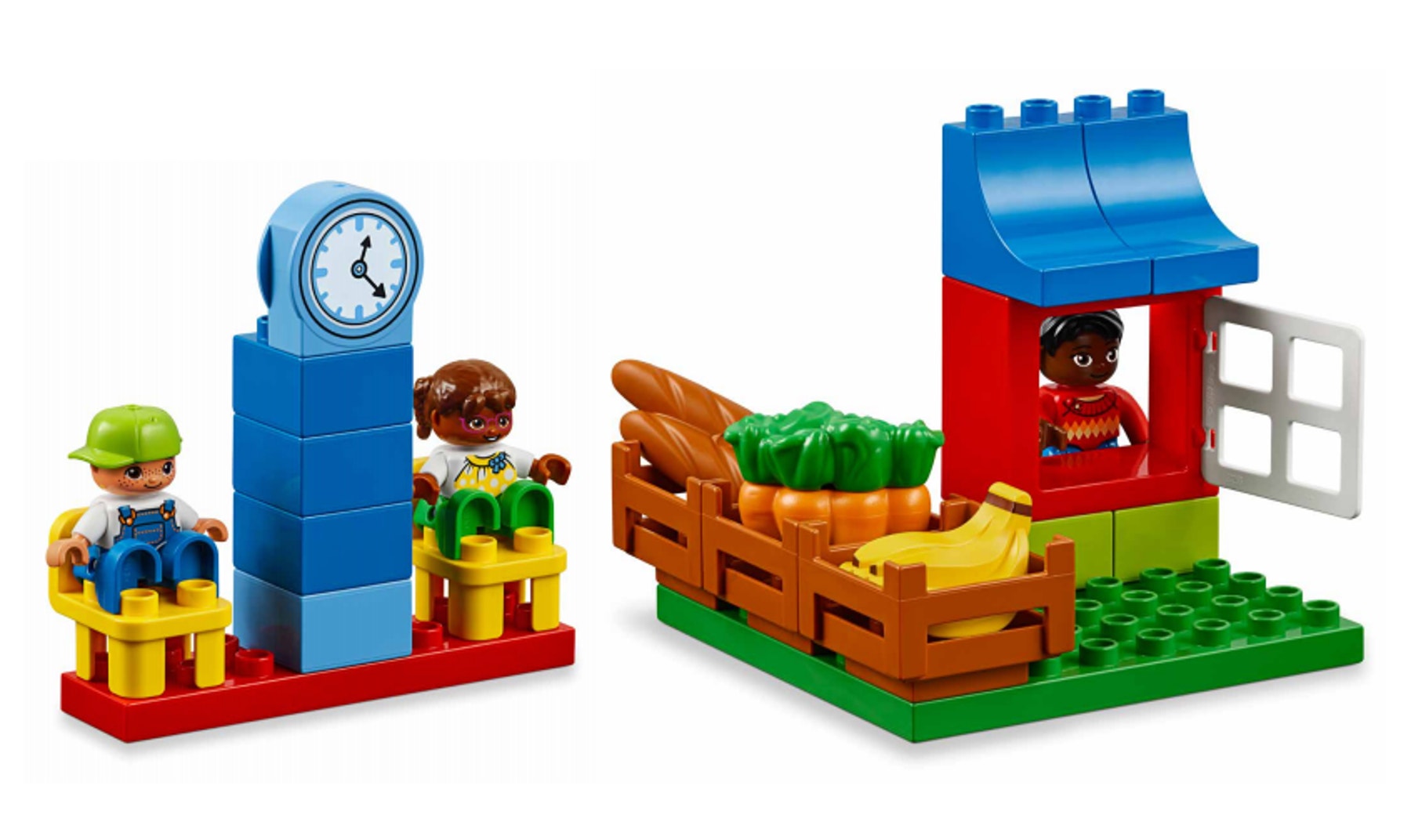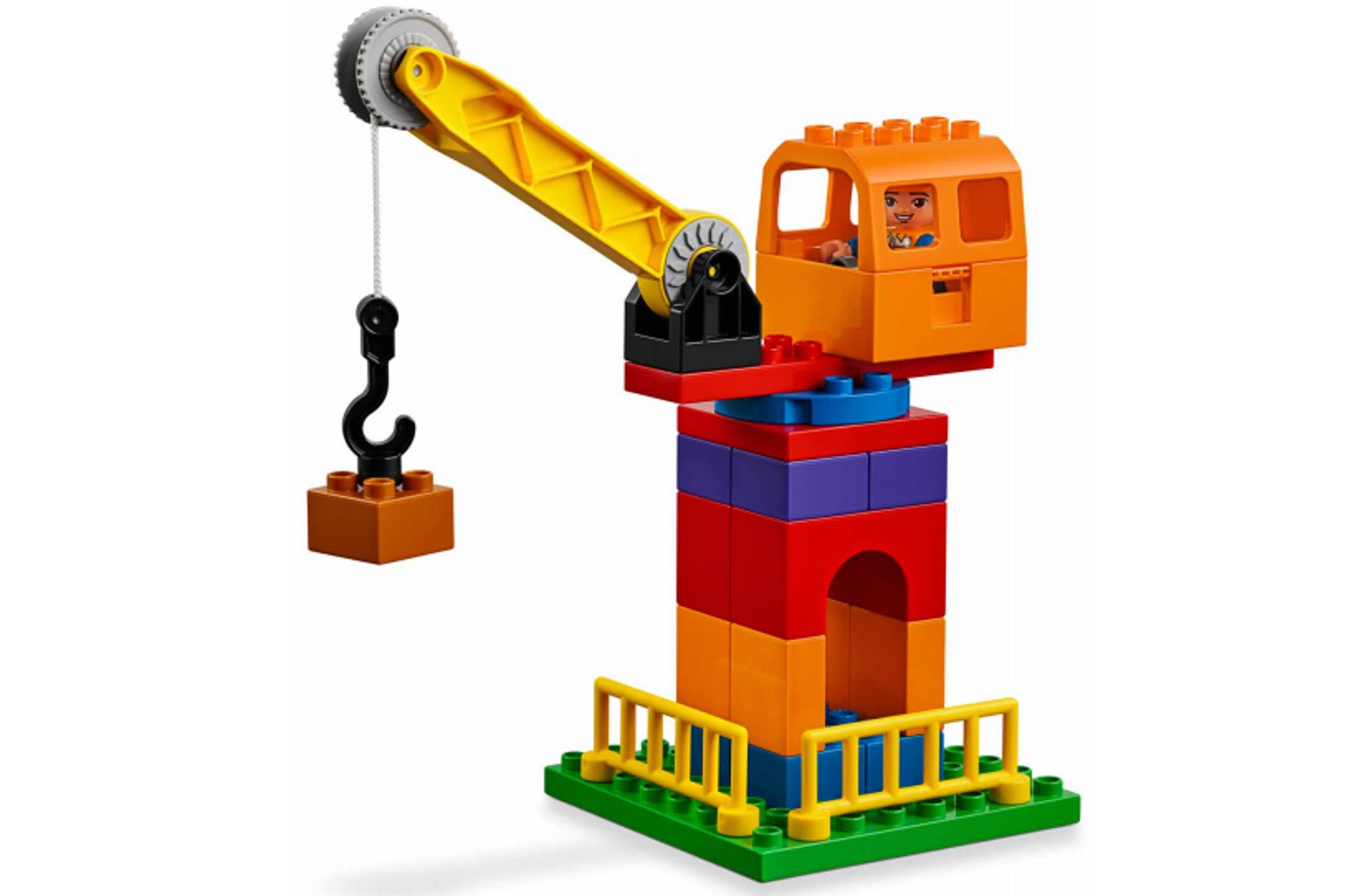Sequencing Stops
In this lesson, children will learn to sequence events, practice ordering numbers and hear and/or use sequential language

Connect
Talk to the children about how train travels. Explain that a train moves along the tracks but must make a stop whenever it reaches a station.
Tell them that you will be playing a game called stop and go!
Explain that when they hear you say, “all aboard,” they will move around the classroom pretending to be trains and that they must stop when you say, “pulling into the station.” If they don’t listen
carefully, they will miss the station!
Construct
Tell the children that they are going to build train stations and help the train make its stops in the correct order.
Encourage each child to build a place for the train to stop. It can be a classic station or another interesting place like a park or a market. Show them the
inspiration photos and encourage them to be as creative as they would like!Once each child has finished building, ask them to work together to build a train track long enough that they can place their models along the edge to form train
stops. As a group, place a number brick at each stop and tell the children to make sure the number bricks are placed in the correct order.Have the children take turns moving the train along the track and pulling into each stop to load or unload passengers.
- As they move the train, encourage the use of sequential language (i.e., the train
goes to stop one first, then to stop two, etc.)



Contemplate
Facilitate a discussion about the train stops.
Consider asking questions like:
- How many train stops did we build?
- How many stops did the train need to make?
- How did the train know where it should stop next?Facilitate a discussion about the importance of sequencing the stops in order.
Talk about the consequences of the train stopping in the wrong order (i.e., angry
passengers).
Continue
Explain that sometimes trains have instructions to drop-off or pick-up items or people at specific stops, this is called a schedule
Encourage the children to set-up the train stops and role-play making their own train schedule (e.g., pick-up three people at station one, drop-off four suitcases at station two)
Did you notice?
Observing the following skills can help you monitor whether the children are developing the necessary competencies in math.
- Using mathematical terms, such as positional language, number names, etc.
- Counting using number names, and beginning to recognize the number of objects in a set
- Sequencing numbers or events
Teacher Support
Children will:
- Practice sequencing events
- Practice ordering numbers
- Hear and/or use sequential language
For up to 5 children
The Mathematics guidelines from the National Association for the Education of Young Children (NAEYC) and HeadStart have been used to develop the Math Train lessons. Please refer to the learning grid for an overview of the learning values referenced throughout this Teacher Guide.
The learning goals listed at the end of each lesson can be used to determine whether or not each child is developing the relevant early math skills. These bullet points target specific skills or pieces of information that are practiced or presented during each lesson.